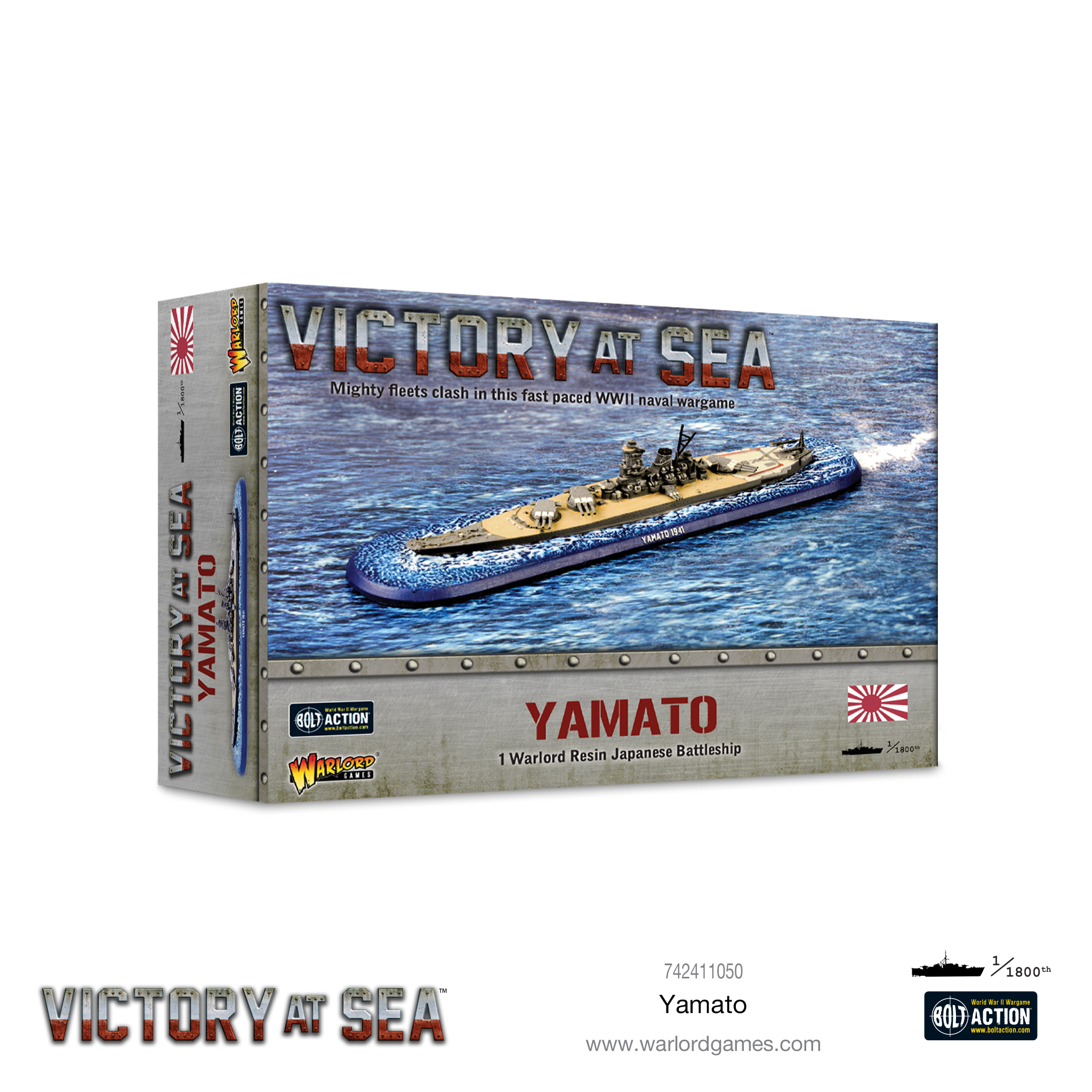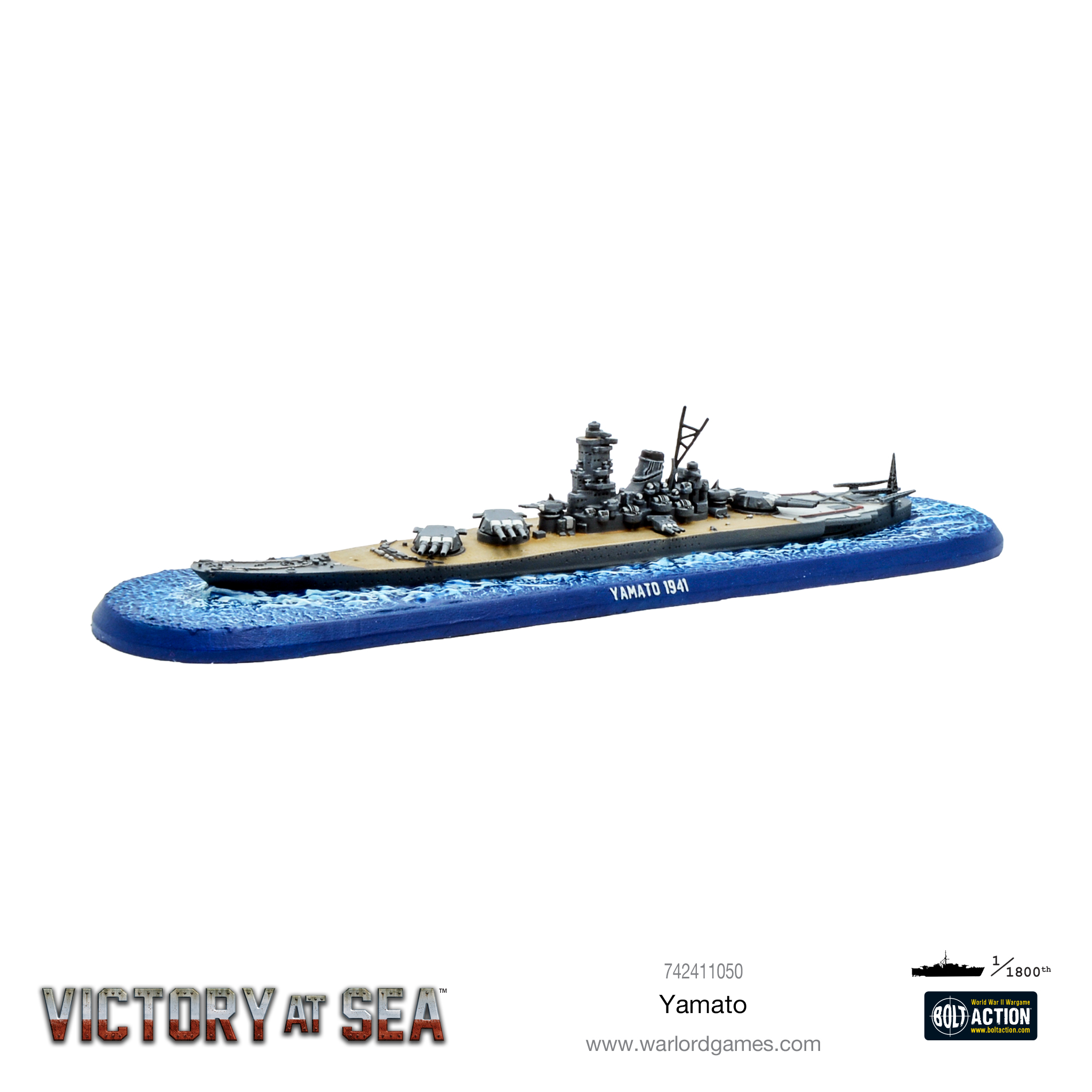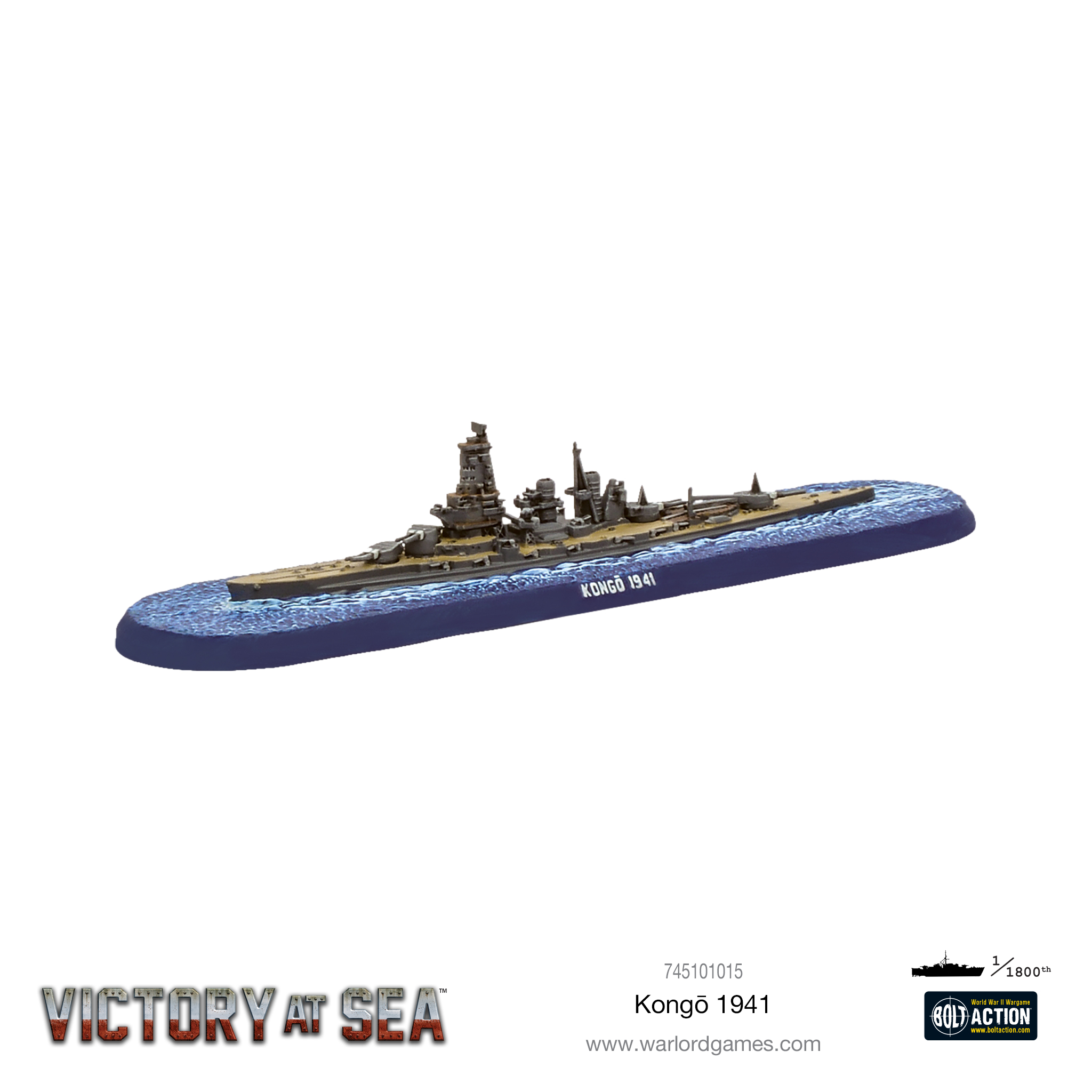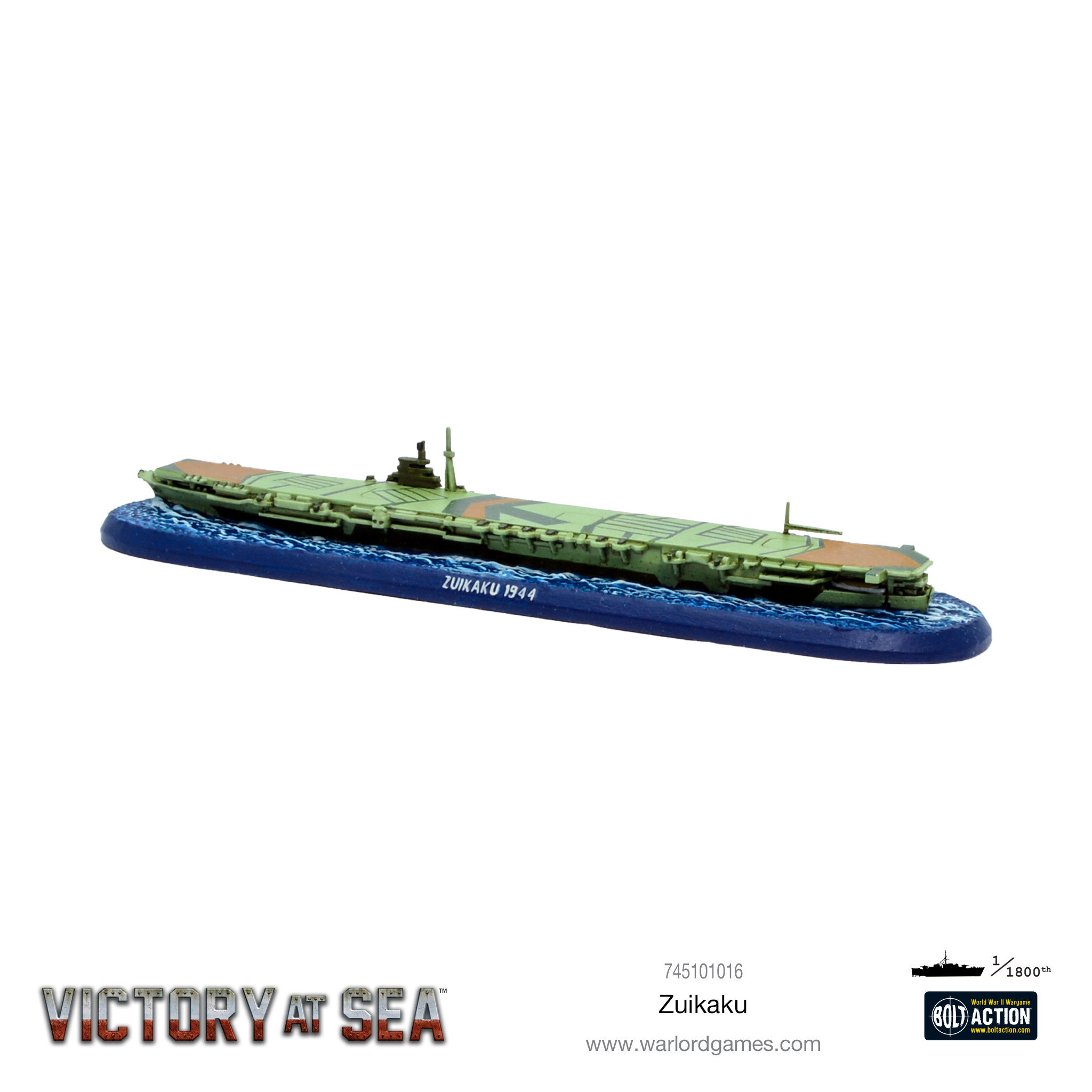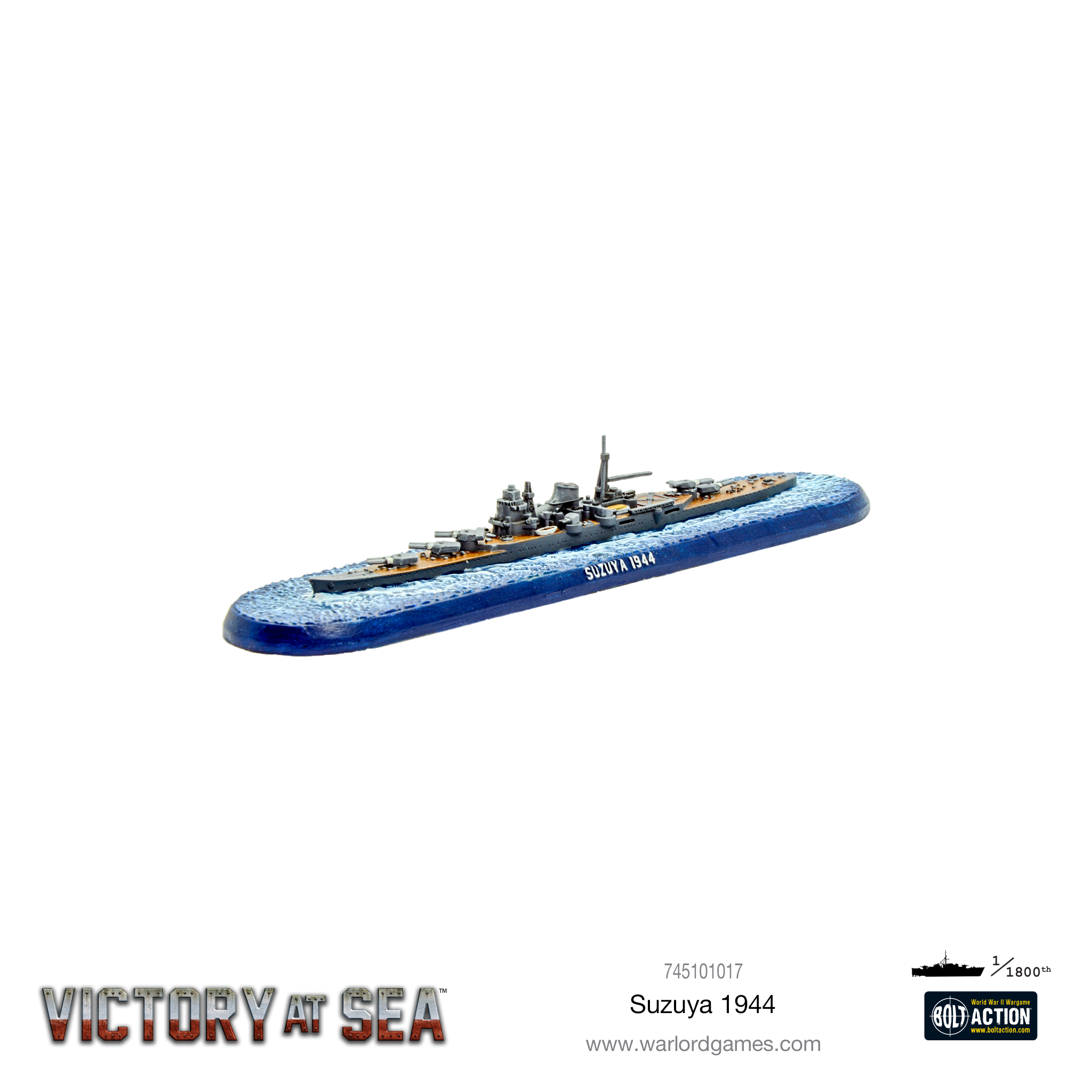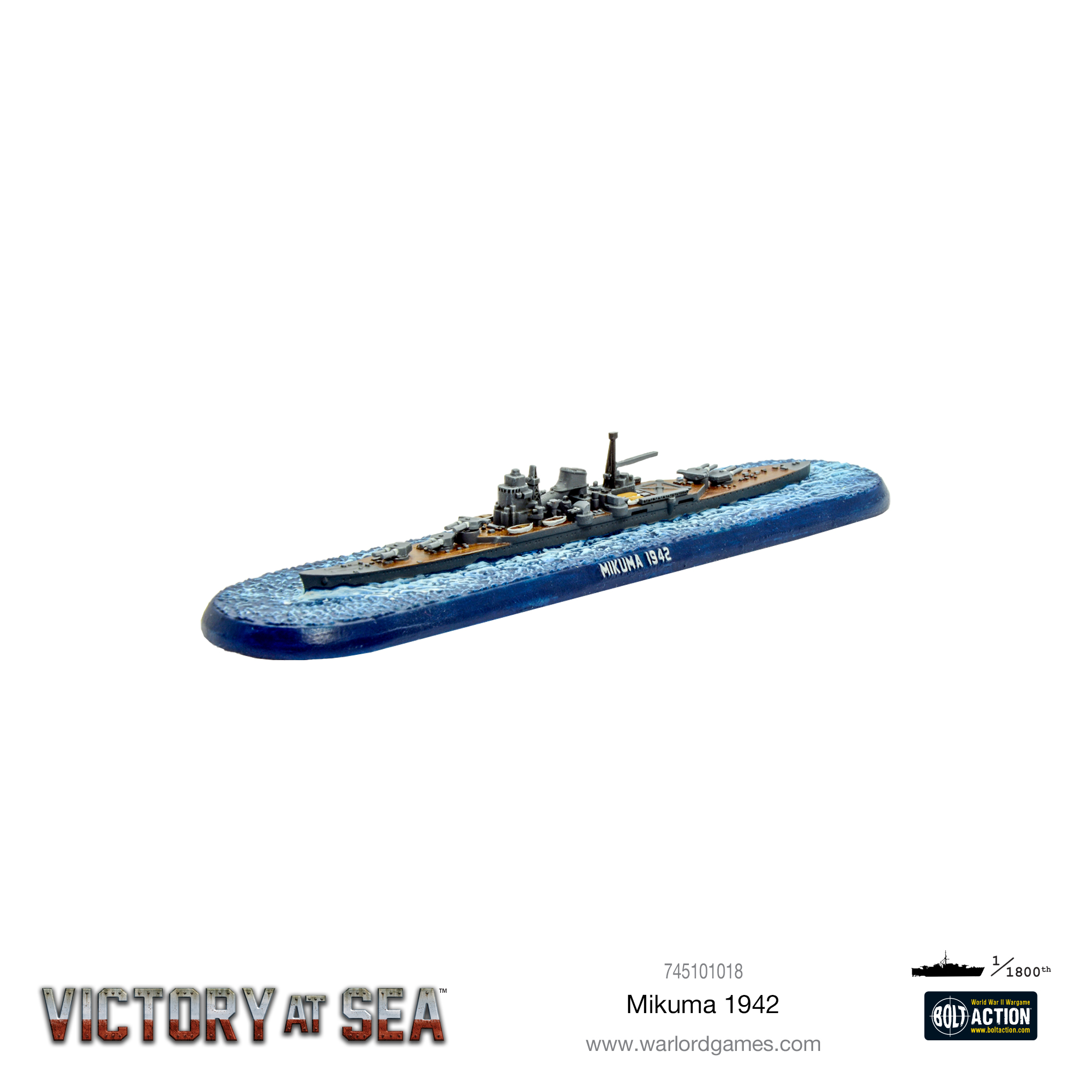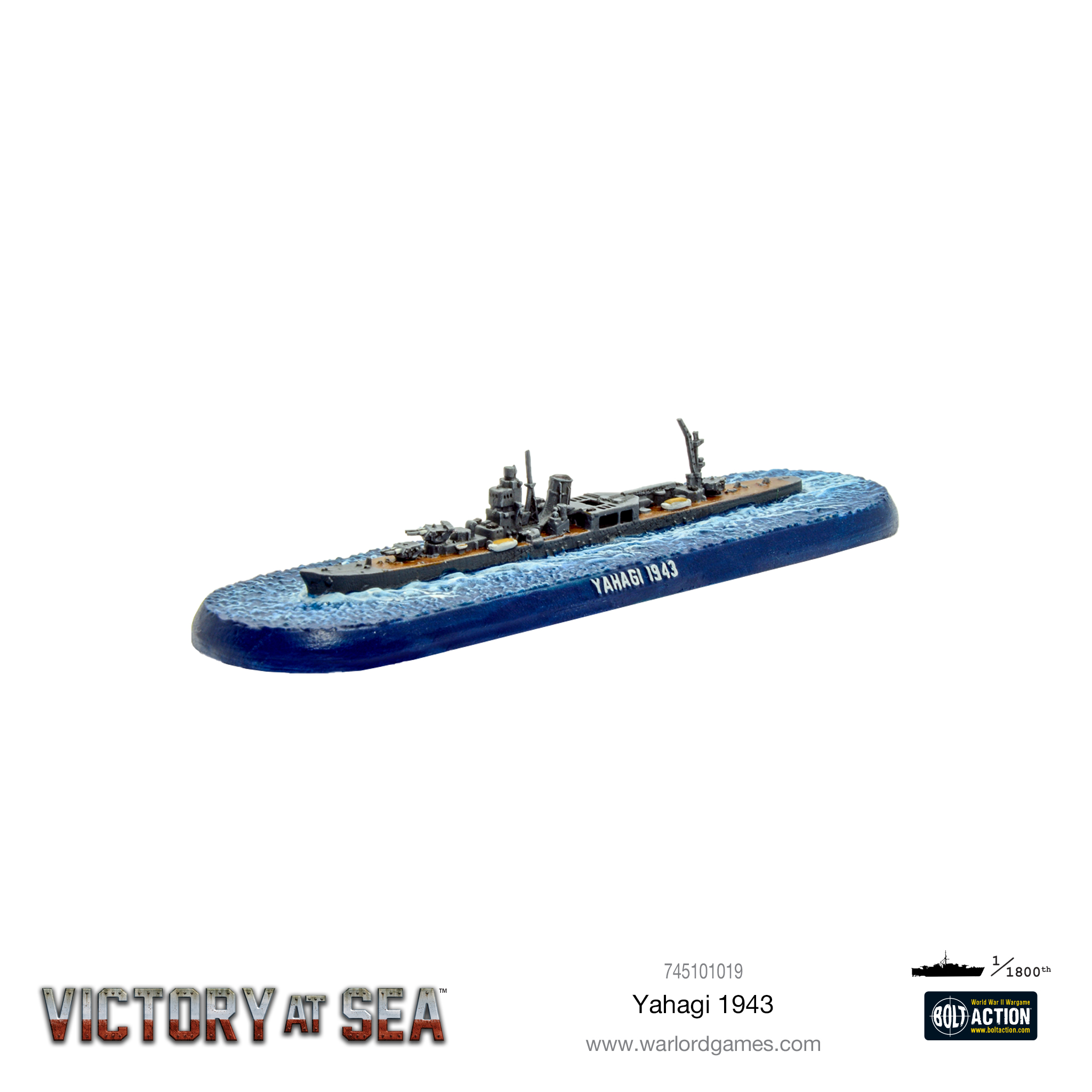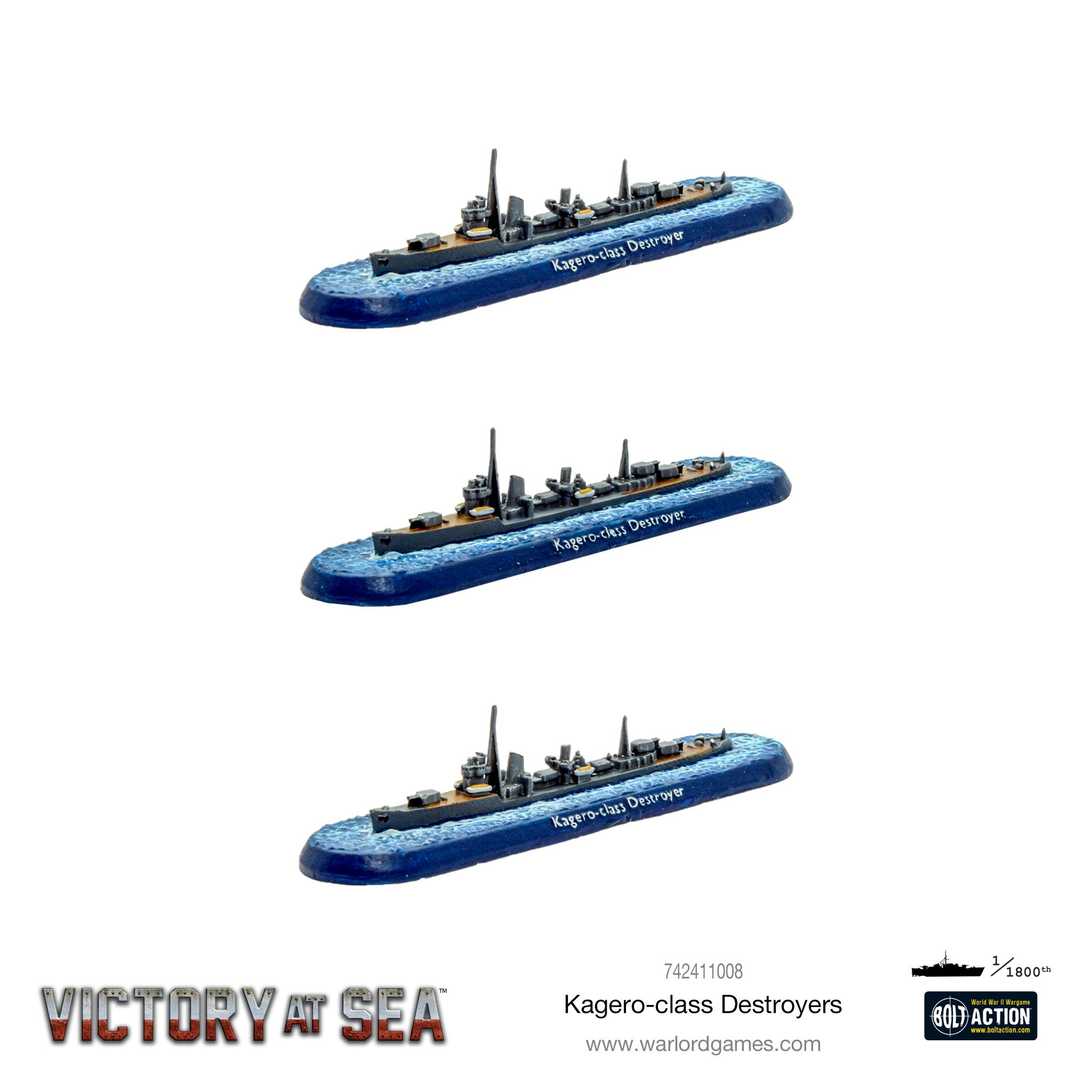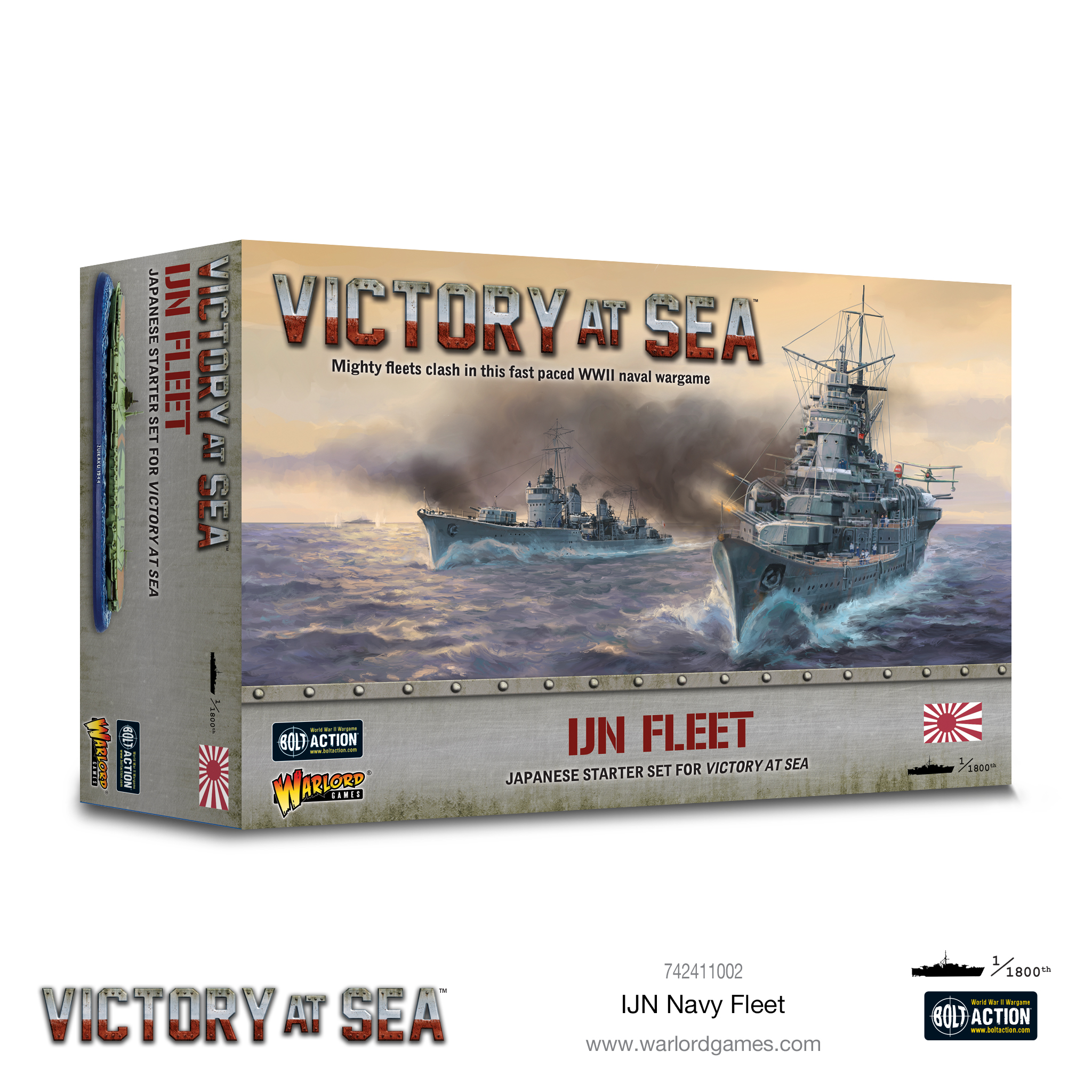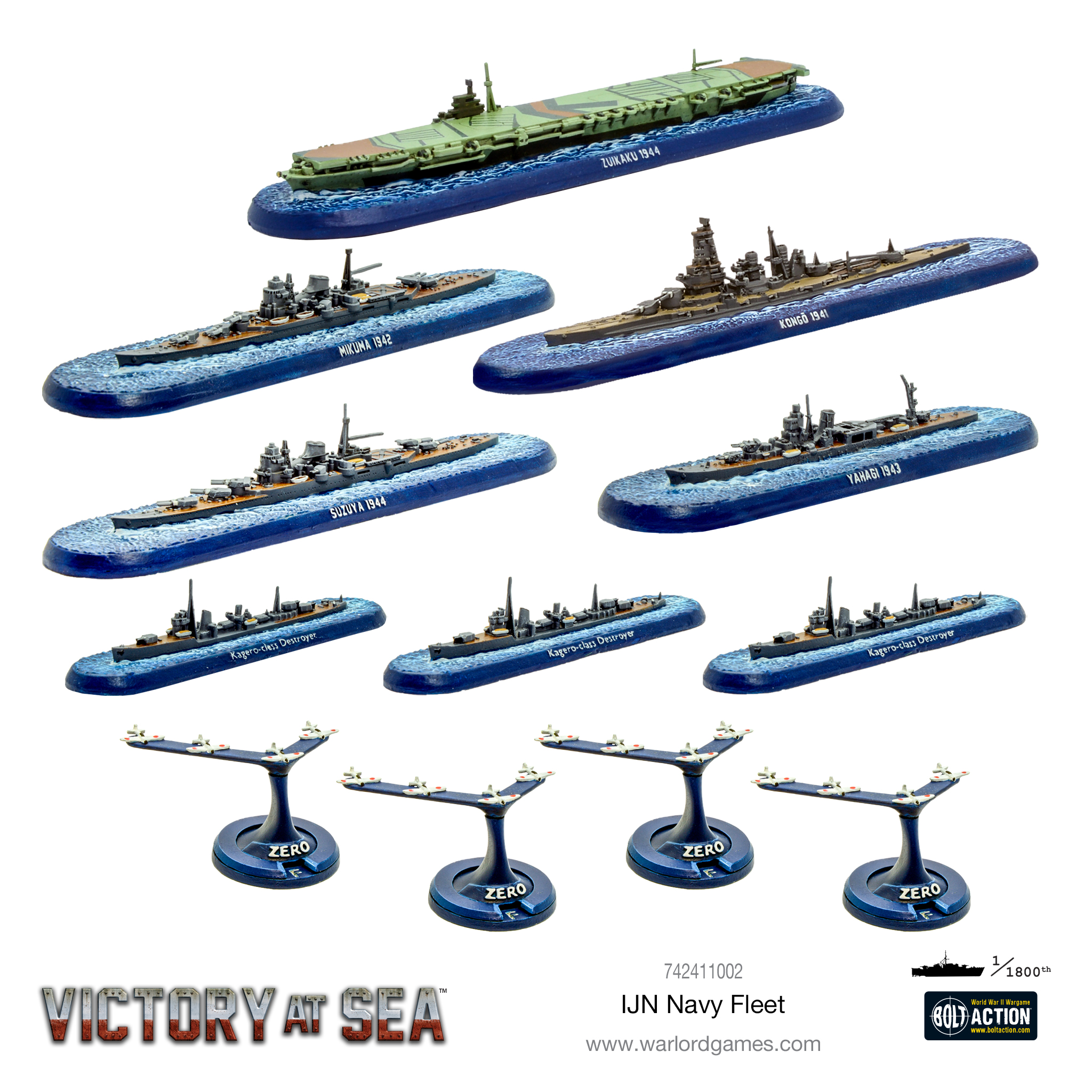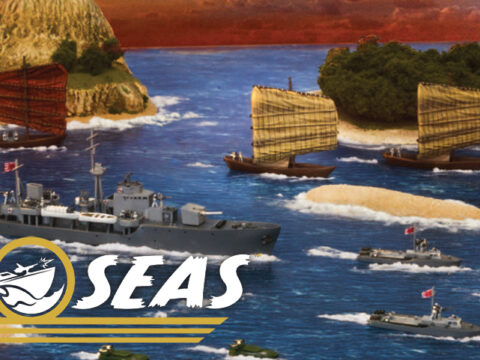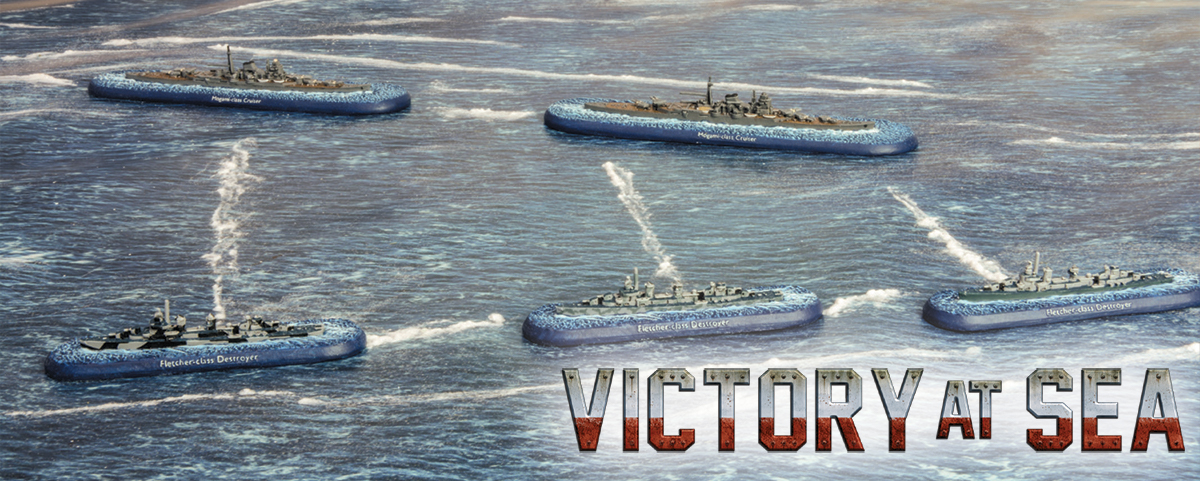
The Japanese understood the potential of air power, early on, creating an effective carrier arm. In addition, the Imperial Japanese Navy possessed a powerful battleship force, which included the largest and most powerful battleships in the world, the Yamato and the Musashi.
The Imperial Japanese Navy’s potential was demonstrated in the attack on Pearl Harbor in 1941, devastating the US fleet at anchor. Midway was the turning point of naval war in the Pacific and, thereafter, the Japanese were unable to make headway against the increasing carrier strength of the US Navy. With the victorious Allies pushing towards the Japanese islands, kamikaze aircraft and other suicide weapons were deployed against US forces.
Yamato
Yamato (大和, “Great Harmony”) and her sister ship, Musashi, were constructed shortly before the outbreak of World War II. They were the heaviest and most powerfully armed battleships ever constructed; armed with nine 18.1” Type 94 main guns – the largest guns ever mounted on a warship.
The battleship’s design was an answer to the numerically dominant US Navy – Imperial Japan’s primary threat in the Pacific. Though laid down in 1937 the battleship was not actually commissioned until late 1941, a week after fated attack on Pearl Harbour. She served as the flagship of the Combined Fleet. It was from her bridge that Admiral Isoroku Yamamoto directed the fleet at Midway in June 1942, though this proved a disastrous defeat for the Japanese. She was thereafter replaced by the Musashi as flagship and spent the larger part of 1943 and 44 moving between ports in a responsive role.
October 1944 was the only occasion on which Yamato fired her main guns in anger, at the Battle of Leyte Gulf. Yamato had been tasked with repelling American forces invading the Philippines. Though success lay within Japanese grasp, such was the ferocity of a counterattack of a light escort carrier group of the U.S. Navy’s Task Force 77 that the Japanese enacted a retreat, falsely believing they faced a much larger carrier force.
By early in 1945, Naval superiority in the Pacific belonged firmly to the US Navy. In an effort to delay the Allies’ advance, Yamato was dispatched to Okinawa in April 1945, with no expectation to ever return. Her orders were to beach herself and fight until destroyed. This was not allowed to occur when, on 7 April 1945 when she was sunk by US carrier-based bombers and torpedo bombers, with the loss of the majority of her complement.
Kongō
Kongō (金剛, “Indestructible Diamond”), named for the mountain, was the first battleship of her class, serving in both the first and second world wars. At the time of construction in the early 1910s she was a capital ship (the last Japanese Capital ship to be built outside of Japan) and was among the most heavily armed ships in any Navy. She received two major reconstructions throughout her life, the first being in 1929, she was rebuilt as a battleship, then later in 1935, along with her sister vessels, her superstructure was completely rebuilt, resulting in an increased rate of knots that would allow her to keep pace with the developing carrier groups – thus reclassifying her a s a fast-battleship.
Kongō’s World War II service history includes covering the Japanese amphibious landings in British Malaya and the Dutch East Indies in 1942, shortly before engaging American forces and Midway and during the Guadalcanal campaign. 1943 saw her almost entirely stationed in the Caroline Islands, only being deployed in response to aircraft carrier raids against Japanese Islands scattered across the Pacific. She was part of the Battles of the Philippine Sea and Leyte Gulf in 1944, successfully sinking enemy vessels in the latter. Her ultimate fate was at the hands of a US Submarine (USS Sealion) whilst crossing the Formosa Strait on 21 November 1944. She has the unfortunate distinction of being the sole Japanese battleship sunk by submarine in WW2.
Zuikaku
Zuikaku ( 瑞鶴 “Auspicious Crane”), a Shōkaku-class aircraft carrier, along with her sister ship, were the most successful carriers operated by the Japanese Navy during WW2. The Japanese had learnt many lessons prior to her construction and as such Zuikaku was considerably larger, better armed, and had a higher aircraft capacity than previous purpose-built Japanese Carriers. Setting sail in November 1941, her complement of aircraft included 18 Mitsubushi A6M fighters, 27 Aichi D3A dive bombers and 27 Nakajima B5n torpedo bombers.
She was part of the task force whose aircraft attacked Pearl Harbor in December 1941, and was a prominent participant in many subsequent battles in the Pacific Ocean – including, Java, Ceylon, the Coral Sea, the Eastern Solomons, Santa Cruz, the Philippine Seas and Leyte Gulf. It was at this last action that she was sunk, at the Battle of Cape Engano on 25 October 1944. She was the last of the six carriers that participated in the Pearl Harbor attack to be sunk.
Suzuya
The heavy cruiser, Suzuya, is believed to be one of the deepest shipwrecks on record at (a yet) unconfirmed 27,600 feet. She met her fate at the Battle of Leyte Gulf when she was beset upon by carrier-based aircraft – a torpedo exploding in her own tubes set off a chain reaction of fired and damage that forced the ship’s abandonment.
Prior to her sinking, she was involved in covering the landings at Malaya, the invasion of Sarawak, raids in the Indian Ocean, The Midway invasion force, the Solomon Islands, and the Battle of the Philippine Sea.
Mikuma
The second of the four Mogami class heavy cruisers, Mikuma was completed in 1935 but quickly underwent refits to replace her main turrets with twin 203 mm guns. Her former weapons, triple 155mm guns went to Yamato. Early in her career she was tasked with the occupation of Cochinchina, the invasion of Malaya and the invasion of British Borneo.
At the Battle of Sundra Strait Mikuma engaged the Allied cruisers USS Houston and HMAS Perth, both of which were sunk. Mikuma then participated in the Indian Ocean Raids, before being recalled for the Midway operation. It was here she met her demise; on 5 June 1944, she was badly damaged by a friendly ship collision attempting to evade US submarine torpedo attacks. A succession of attempted airborne attacks, from B-17s to Vought SB2U Vindicators all failed. The next morning, however, SBD Dauntless dive bombers from USS Enterprise and Hornet managed to successfully inflict 5 bomb hits resulting in a cataclysmic chain reaction of explosions of the onboard AA shells and torpedoes.
Yahagi
Yahagi was the third of the Agano class of light cruiser, intended to be the flagship of a destroyer flotilla. She was completed in December 1943. She participated in the Battles of the Philippine and Leyte Gulf and remained relatively unscathed despite weathering repeated attacks by enemy aircraft during these actions.
She was one of the vessels instructed to accompany Yamato on its final suicide run against the American invaders off Okinawa. On 7 April 1945, this task force was beset by 386 enemy aircraft. During the first wave of these attacks, Yahagi was struck directly in the engine room, and rendered unmovable. Subsequent waves rained more bombs and torpedoes upon her, such damage making rescue impossible.
Kagero-Class Destroyers
Essentially an enlarged Fubuki-class, the Kagerō-class hull design was scaled up to overcome earlier design deficiencies. As a result, the Kagerō-class was the equal of any of its contemporaries in other navies and superior to most. Only the initial lack of radar and continued poor quality of sonar equipment and anti-aircraft defences (shortcomings which bedevilled all Japanese destroyers) hindered their performance.
IJN Starter Fleet
The vessels detailed above (with the exception of Yamato – available separately) can all be found in the Imperial Japanese Starter Box for Victory at Sea, along with A6M2 Zero aircraft flights. Full contents:
- Kongō -class Battleship Kongō 1941
- Shōkaku-class Carrier – Zuikaku
- Mogami-class Cruiser – Suzuya 1944
- Mogami-class Cruiser – Mikuma 1942
- Agano-class Cruiser – Yahagi 1943
- Kagero-class Destroyer 1941 x3
- Fighter Aircraft – Mitsubishi A6M2 Zero x 4 flights
- Ship Cards and Damage Sliders
- Assembly Instructions

